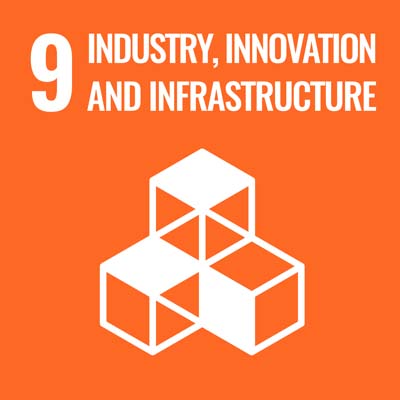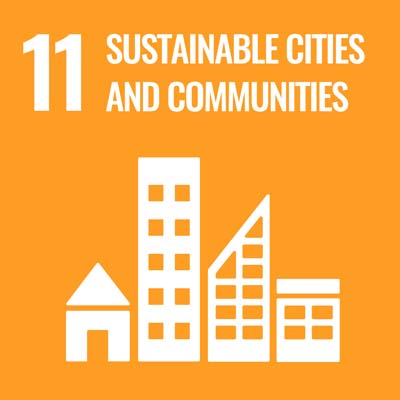This course meets the requirements of the Level 7 Through-life Engineering Services (TES) Specialist Standard. Application deadline 12 August.
Overview
- Start dateOctober
- Duration24 months part-time
- DeliveryTaught modules 40%, Group project (as dissertation) 20%, End Point Assessment 40%.
- QualificationMSc
- CampusDependent on delivery mode
Programme details
The programme has been mapped against the Level 7 Through-life Engineering Specialist Apprenticeship Standard and has been developed for organisations who require a full offering that delivers against all aspects of the Standard.
Watch the video to find out more about studying our Through-life Engineering Services Specialist Mastership®.
Why choose Cranfield University as your apprenticeship provider
One of the most powerful ways you can generate value from your Apprenticeship Levy is to upskill your existing workforce. At Cranfield, we’re passionate about providing education tailored for industry. As one of the first universities in the UK to offer degree apprenticeships at master’s level, we understand what is needed to develop industry-led apprenticeship standards and have the expertise to deliver that training. Cranfield's apprenticeship will provide a widening portfolio of Master’s level apprenticeship training required by industry.
Qualifications underpinning the standard
Our Through-life Engineering Services Specialist Apprenticeship is underpinned by Through-life System Sustainment MSc, a mature executive course that has been running for over 10 years and its accredited by the Institution of Mechanical Engineers (IMechE), Institution of Engineering and Technology (IET) and Royal Aeronautical Society (RAeS) on behalf of the Engineering Council . Many of our graduates hold senior positions in industry.
Who is it for?
This Level 7 Apprenticeship has been developed for organisations that require their workforce to engage in matters related to through-life management, support, asset management, servitisation and/or maintenance. Organisations that are through-life engineering services dependent will benefit from this programme, through the upskilling of employees in a range of roles such as engineers, business administrators, logistics, finance and commercial practitioners.
Benefits
Learners will develop their specialist skills, addressing the current gap in highly-trained individuals able to support complex equipment and critical systems. The capabilities gained during the course are expected to contribute to the organisation's achievement of competitive advantage and sustainability objectives.
Furthermore, early career professionals will benefit from a postgraduate qualification and personal development opportunity with the UK’s leading postgraduate university specialising in technology and management. The applied nature of the programme enables personalised, specific and organisationally aligned development.
Delegates will be able to:
- Analyse and improve business processes.
- Identify opportunities for innovation, including servitisation.
- Manage complex infrastructure projects.
- Develop new products and services.
- Refine operations and manage obsolescence.
- Deliver improved results.
Course details
Course delivery
Taught modules 40%, Group project (as dissertation) 20%, End Point Assessment 40%.
Group project
The group project gives a team of students the opportunity to take on responsibility for a consultancy type project working for an industrial sponsor. The group project is determined in collaboration with the sponsor organisation and will aim to solve real-world problems. Note: A dissertation can replace the group project.
Example titles:
- Analysis of Through-Life Engineering Services – Current Practice and Benchmarking
- Life cycle cost model of bearings as a generic commodity
- Feature deterioration mechanism knowledge base
- Using diagnostics and prognostics technology to reduce total through-life costs in complex system.
The title and abstract of a recent group project:
Title: Conceptualisation of Digital Twin in the Service Environment
The project details an investigative research project on the subject of the Digital Twin. The project reviews a wide range of literature to identify the state of the art and also conducts a survey to provide detailed insight. The concept of a Digital Twin is defined and a potential Digital Twin is mapped using systems engineering techniques. This definition and system map is then used to assess the potential benefits of the Digital Twin to an in-service product. The paper describes the development of a use case on an HP Turbine blade to demonstrate how the Digital Twin can improve decision making. The paper concludes with a Roadmap which defines the capabilities, requirements and benefits which will be necessary to develop a full scale Digital Twin.
Modules
Keeping our courses up-to-date and current requires constant innovation and change. The modules we offer reflect the needs of business and industry and the research interests of our staff and, as a result, may change or be withdrawn due to research developments, legislation changes or for a variety of other reasons. Changes may also be designed to improve the student learning experience or to respond to feedback from students, external examiners, accreditation bodies and industrial advisory panels.
To give you a taster, we have listed the compulsory and elective (where applicable) modules which are currently affiliated with this course. All modules are indicative only, and may be subject to change for your year of entry.
Course modules
Compulsory modules
All the modules in the following list need to be taken as part of this course.
Managing Assets and Value
| Module Leader |
|
|---|---|
| Aim |
|
| Syllabus |
• Asset management business models, with examples of from different sectors. • Value in use; stakeholder analysis; service design. • Economic drivers for asset management; investment appraisal; cost vs performance trade off studies – methodology and examples. • Engineering challenges in asset management with real life examples, and future trends. |
| Intended learning outcomes |
On successful completion of this module a student should be able to: 1. Appraise the key through-life drivers for a complex engineering system and the risks and uncertainties involved. 2. Perform critical analysis of alternative business models. 3. Estimate value in the context of service networks. 4. Assess cost and performance trade-off options in an engineering system. 5. Analyse engineering challenges and future trends. |
Through-Life System Effectiveness
| Aim |
To examine the fundamental factors (e.g. reliability) that influence the availability of complex engineering equipment, the implications (e.g. cost) of it’s through life support and its ultimate effectiveness (e.g. trade-off) throughout its lifecycle with regards to the value streams (i.e. Avoid, Contain, Recover, Convert). |
|---|---|
| Syllabus |
• The definitions of Availability, Reliability and Maintainability (AR&M) and logistics to deliver systems effectiveness in relation to the stated requirements. • Definitions and measurement of logistics for supportability strategies and contracting. • Supportability Concepts and Logistics, their elements and interaction with AR&M. • Quantitative Requirements, Mean Time Between Failure (MTBF) logistic delay, Mean Time to Repair (MTTR) and impact on service provided. • Understand failure rate, hazard rate, failure distributions and failure avoidance including failure analysis in design and use of R&M predictions. • Integrated Logistic Support (ILS) and impact on system effectiveness and system sustainment through life including the design of the support solution. • Understand the philosophy, scope and capabilities of ILS and Logistics Support Analysis (LSA) and associated systems thinking. • AR&M and supportability tools (e.g. FMECA and FTA techniques) and Reliability Centred Maintenance (RCM). • Human Factors Integration (HFI) and impact on system effectiveness and system sustainment through life. • Testing and Evaluation and assurance of system effectiveness and sustainment for system operation and support. • Data collection and management/interpretation of data. |
| Intended learning outcomes |
On successful completion of this module you should be able to: 1. Appraise supportability concepts & logistics and how they contribute to system effectiveness and sustainment. 2. Analyse the measures of Availability, Reliability and Maintainability (AR&M), how they are manipulated and applied and how their delivery can be assured. 3. Evaluate the AR&M and logistic techniques, including testing and trials, used throughout the lifecycle. 4. Evaluate the management issues for AR&M and Supportability in providing operational availability at minimum Through Life Cost (including programme management, risk management and capability integration). 5. Use of data-driven technologies to critically evaluate the strategies to plan system effectiveness through-life by considering the value streams. |
Leadership and Change Management
| Aim |
|
|---|---|
| Syllabus |
• Values, attitudes and behaviours necessary for effective through-life engineering. • Characteristics, scope, purpose and roles and responsibilities. • The service support skills of negotiation, consultancy, facilitation, coaching, communication, team working and leadership. • The role of ‘self’ in managing and leading change. • Resistance to change and sustainability of change – the role of cultures. • The diverse nature of organisations and how people, management and strategy are influenced by internal and external factors. • Change management including change in failure in service support and sustainment environments. • Pre-requisites for successful change. • Performance management approaches to drive successful implementation and change. |
| Intended learning outcomes |
On successful completion of this module a student should be able to: |
Optimising Whole Life Cost and Performance Management
| Aim |
To introduce Cost Engineering principles, procedures and practices that will contribute to the development of affordable products and services with the focus on optimised whole life cost and performance. |
|---|---|
| Syllabus |
• CE principles, cost estimation and modelling techniques, CE process, whole life costing, Integrated Logistic Support (ILS) costing, cost of hardware development and manufacture, cost of through life support. • Dynamic cost modelling, Knowledge management for Cost Engineering, affordability engineering, risk analysis and uncertainty management, systems thinking for cost. • Holistic life cycle related CE case studies for improved business intelligence: Building awareness of software tools (e.g. TruePlanning, SEER-H). |
| Intended learning outcomes |
On successful completion of this module you should be able to: 1. Critically apply the key techniques for whole life costing and performance management. 2. Analyse cost estimates for robustness and identify performance measures for a complex engineering system. 3. Appraise and estimate the cost of different through-life scenarios, by evaluation of maintenance and whole life costs, while achieving required asset performance. 4. Evaluate the risk and uncertainties involved in cost and performance estimating. 5. Critically evaluate the terminologies and key concepts used in cost accounting. |
Operational Availability and Risk
| Aim |
Plan, source, transform, deliver and return are system activities that work towards the creation of values to business and customers. Operational availability of supported systems is such an anticipated output and even though business and customers cooperate in different levels and ways to deliver it, there are risks that can hinder its achievement. This m odule aims to study the relationship between the concept of operational availability and risk in such systems. |
|---|---|
| Syllabus |
• Problem definition, FMEA and root cause analysis • Concepts of probability, uncertainty and reasoning • Introduction to simulation and its application in the analysis of support problems for the delivery of value and the evaluation of associated risks • Scenarios development and analysis as a means to extend the knowledge base for informed decision making • HRO principles and their applicability in the support operations business objectives |
| Intended learning outcomes |
On the successful completion of this module a student should be able to: 1. Critically evaluate the concept of Operational Availability within the context of the business’ and of the customers’ value creation processes using systems thinking 2. Assess the concept of risk, compare and contrast it with the concept of uncertainty and discuss the applicability of conventional risk assessment tools (FMEA, FTA, ETA) in complex systems that contribute to the delivery of Operational Availability 3. Evaluate the applicability and added value of the High Reliability Organisations (HROs) principles framework and of knowledge expanding methods like scenario development, peers view engagement, bayesian reasoning and simulation, on the preparation and containment of the risks on Operational Availability |
Through-Life Business Models and Servitisation
| Aim |
To enable students to analyse critically the challenges and key issues for the development of alternative business models for Through Life Support. |
|---|---|
| Syllabus |
• The evolution of global trends in maintenance, support and the circular economy in non-traditional TES sectors • Systems and other thinking and practices around requirements for through life support and sustainment. • Requirements capture, change management and economic evolution. • Case studies to illustrate governance, cultures and behaviours, enablers and blockers, performance management, alternative contractual approaches and other possible lessons. • Measuring what matters: ensuring the right metrics for the delivery of effect and delivering an effective assurance process and the limitations of metrics. |
| Intended learning outcomes |
On successful completion of this module a diligent student should be able to: 1. Derive the key characteristics of a range of business models within which fleets of complex, capital-intensive, long service life systems are designed, manufactured, deployed and supported through the life cycle. 2. Determine the broad requirements (organizational, technological, managerial etc) of organizations to operate within these business models. 3. Derive the business and engineering processes, resources, and competences an organization requires to effect the transition from a traditional, transactional-type, product-focused business model, to one of servitisation. 4. Analyse the broad direction of academic research, and of the development of new approaches and processes, in the field of through life support and system sustainment. |
Information Management
| Aim |
|
|---|---|
| Syllabus |
• Data Value Chains • The Data Asset Lifecycle Management Challenges, including Big Data, Quality, Modelling, Standards, and Governance • Internet of Things • From Data to Knowledge and Actions: Data Analytics and Artificial Intelligence • Context Information Management • Signal / Image Management and Cloud Services • Augmented Information Management and Delivery • Edge and Cloud Computing Architectures • Industry Applications and Case Studies • Data - Driven Product and Service Innovation |
| Intended learning outcomes |
On successful completion of this module a student should be able to: 1. Analyse in a systematic way data and information management concepts and practice. 2. Compose information management concepts and technologies to drive opportunities in a business where information management can add business value (Data and Business Value Chains) 3. Analyse and evaluate the application of emerging topics in Information Management such as Data Analytics, Information Visualisation, Cloud Computing, and Internet of Things. 4. Synthesise information management concepts to compose value propositions for data-driven product and service innovation. |
Diagnostics and Prognostics
| Aim |
|
|---|---|
| Syllabus |
• Introduction to the Diagnostics and the Prognostics. • Computational tools to collect, process and analyse sensors data - Hand's on session on Matlab and Signal Express. • Hand's on sessions on Real machine test setups for delivering details on diagnostics sensors, acquisitions and health states. • Raw data analysis and signal processing: Challenges Data Driven, Model Driven and Hybrid Diagnostics and Prognostics Remaining useful life estimation. • Framework of Asset Health diagnostics and prognostics Industrial case studies. |
| Intended learning outcomes |
On successful completion of this module you should be able to: 1. Assess the benefits of key concepts and techniques for maintenance planning, diagnostics and prognostics and health assessment. 2. Evaluate activities to enable the avoidance of deterioration by identifying current Diagnostic and Prognostic technologies, and other technologies. 3. Analyse how diagnostic and prognostic can assist with better intervention timing and content containing the deterioration. 4. Create diagnostics and prognostics framework for asset health. 5. Evaluate the remaining useful life by using the elements of asset health assessment framework. |
Teaching team
You will be taught by industry-active research academics from Cranfield with an established track record in product-service and maintenance systems, and through-life capability management.
How to apply
Prospective delegates
If you would like to find out more general information about the course and your eligibility to attend the programme, please arrange a one-to-one discussion with the course director before you make a formal application.
If you would like to attend this course, please ask your employer to submit an Expression of Interest form to confirm their willingness to sponsor you.
For employers
For employer related enquiries, fees and funding, and the expression of interest/application process, please contact our Apprenticeships Team: apprenticeships@cranfield.ac.uk
To start an application, please complete our Expression of Interest form.
Please note that applications for apprenticeship routes must come via the Expression of Interest form. Apprenticeship applications received via the application button on the non-apprenticeship pages will not be processed.











